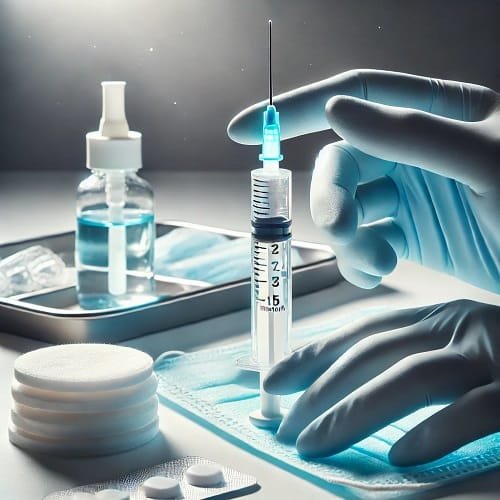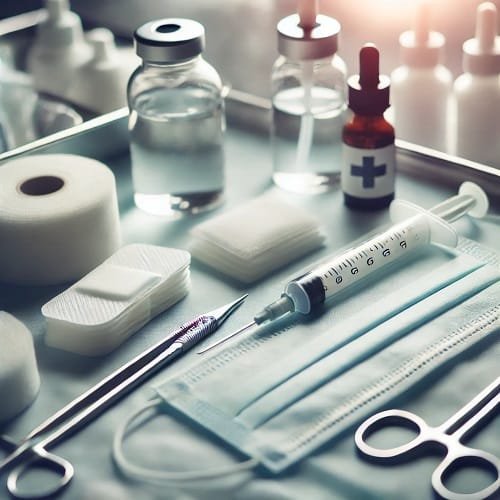Introduction
Can you get filler while breastfeeding? As a new mother, you may be wondering, can you get filler while breastfeeding? It’s a question that many women ask, especially as dermal fillers and other cosmetic treatments during breastfeeding become increasingly popular. The desire to restore your appearance after pregnancy and enjoy smoother, youthful skin is understandable, but it’s also important to consider the safety during breastfeeding before making such decisions.
In the postpartum period, many women feel the pressure to look their best while juggling the demands of motherhood. However, it’s essential to approach injectables and other post-birth cosmetic procedures with caution. The decision to undergo any type of cosmetic procedure during breastfeeding requires careful thought and consideration. While fillers are often safe for most people, breastfeeding adds another layer of complexity. Let’s explore the potential risks, expert advice, and the best course of action for mothers who are contemplating this procedure.
Table of Contents
What Are Dermal Fillers?

Dermal fillers are injections used to replenish lost volume, reduce wrinkles, and improve facial contours. They are often used for facial treatments to rejuvenate the skin, giving it a fresher, more youthful appearance. The primary purpose of dermal fillers is to combat the natural effects of aging by filling in lines and folds in the skin, such as smile lines, nasolabial folds, and under-eye hollows. They can also add volume to areas like the cheeks, lips, and jawline.
The most common type of dermal filler is based on hyaluronic acid, a substance naturally found in the body that helps retain moisture and gives skin its plumpness. Other fillers might contain collagen or other materials that mimic these effects. Another popular treatment related to dermal fillers is Botox, which works by temporarily paralyzing muscles to smooth out wrinkles, though it is technically a neurotoxin rather than a filler.
Many individuals, including new mothers, turn to injectables as a way to regain confidence and refresh their appearance, especially after the physical changes that come with pregnancy and childbirth. These cosmetic procedures offer a non-surgical option for people who want noticeable results without the downtime associated with more invasive treatments.
The Science Behind Breastfeeding and Cosmetic Treatments

Breastfeeding is a unique and beautiful journey, but it also brings significant hormonal and physical changes to the body. These changes can affect everything from milk production to the overall health and appearance of the postpartum body. As a breastfeeding mother, you may notice fluctuations in your skin’s elasticity, texture, and even the appearance of wrinkles, leading some to consider cosmetic procedures like dermal fillers. However, it’s essential to understand how breastfeeding hormones can influence the effectiveness and safety of these treatments.
During breastfeeding, hormone levels, particularly estrogen and progesterone, fluctuate. These hormones play a significant role in skin health, moisture retention, and overall appearance. As a result, you might notice that your skin is drier, more sensitive, or even more prone to irritation. The hormonal shifts during this time can also impact the way your body reacts to treatments like injectables. For example, while dermal fillers work by replenishing lost volume, these hormonal changes could affect how the filler holds up over time.
There are also potential health risks to consider when undergoing a cosmetic procedure during breastfeeding. Certain fillers contain ingredients that could potentially pass into breast milk, though research on this is limited. Moreover, the maternal health and immune system may also affect how the body responds to the injectables. Some mothers may experience more pronounced side effects or complications during breastfeeding due to the body’s altered state.
While many women do proceed with injectables after consulting with their healthcare providers, it’s important to weigh the benefits and potential risks carefully. Always prioritize the health of both mother and baby when considering any cosmetic procedure during this delicate time.
Can You Get Filler While Breastfeeding? Expert Opinions

When considering whether you can get filler while breastfeeding, expert opinions vary, but the consensus is that caution is essential. Doctor consultation is highly recommended before undergoing any injectable treatments while breastfeeding. Many cosmetic surgeons and dermatologists suggest that while the risk is generally low, there are factors that need to be carefully considered.
The safety of fillers during breastfeeding depends on the type of filler used and the materials it contains. Some dermal fillers are made from substances like hyaluronic acid, which are considered safer due to their natural presence in the body. However, there is limited research on how these substances interact with breast milk or affect the baby during breastfeeding. Medical advice emphasizes that while hyaluronic acid fillers are likely safe, there are other filler types, such as collagen-based ones, that may pose more risks.
Expert recommendations typically focus on ensuring that the procedure is done by a qualified professional, ideally one experienced in working with mothers. In addition, many doctors recommend waiting until the breastfeeding period is well-established, usually after the first six months, before considering postpartum treatments like fillers. This minimizes the potential for complications related to both the mother’s health and milk production.
The main risks associated with filler injections while breastfeeding include allergic reactions, infections, and the possibility that certain ingredients could pass into breast milk. While the risk of these issues is minimal, it’s important to assess your overall health and any underlying conditions that may affect how your body responds to the treatment.
Ultimately, the decision to undergo dermal filler treatments during breastfeeding should be made in close consultation with a healthcare provider who understands your unique needs and circumstances. Prioritizing safety for both you and your baby is essential, and professional guidance can help you make an informed, confident choice.
Potential Risks of Getting Filler While Breastfeeding

While dermal fillers offer aesthetic benefits, it’s crucial to understand the potential risks of getting filler while breastfeeding. Many mothers are concerned about the effects these cosmetic procedures may have not only on their own health but also on their baby. It’s important to weigh the health risks and possible side effects before undergoing any treatment.
One of the most common complications following filler injections is infection. Though rare, infections can occur if the procedure isn’t performed in a sterile environment or if proper aftercare isn’t followed. Allergic reactions are another possibility, and while they are infrequent, some individuals may be sensitive to the ingredients in certain injectables. This can cause swelling, redness, or irritation, and in more severe cases, may lead to anaphylaxis. For breastfeeding mothers, it’s important to remember that these reactions could be more difficult to manage during lactation, as medications and treatments often interact with the body differently.
Another significant concern for mothers is the potential impact of filler complications on milk production. Some injections during lactation may contain chemicals that could pass into breast milk, although research on this subject is limited. The unknown nature of how fillers might affect lactation or the infant’s health makes it essential to approach the procedure with caution. Some chemicals in the fillers may also interfere with the mother’s natural hormone balance, which could have an effect on breastfeeding safety and milk supply.
Additionally, considering the maternal health is crucial, as the body’s immune system is altered during breastfeeding. A weakened immune system may not respond to treatments as effectively, increasing the likelihood of side effects or complications. Certain fillers, especially those that are not made from natural substances like hyaluronic acid, may be more risky for breastfeeding mothers. For instance, collagen-based fillers might provoke stronger reactions or complications.
Ultimately, it’s essential to carefully evaluate these potential complications and consult a healthcare provider who can offer personalized advice based on your health status and the type of filler you are considering. Prioritizing breastfeeding safety and being fully informed about the risks will ensure that you make the right decision for both you and your baby.
ALSO READ
Can You Take Collagen while Breastfeeding
Is it safe to drink kombucha while breastfeeding?
Can You Take Pre-Workout While Breastfeeding Safely
Are There Safe Alternatives for New Mothers?

For breastfeeding mothers who are hesitant about getting dermal fillers, there are several safe alternatives that can rejuvenate your appearance without the risks associated with injections. Many non-invasive treatments offer effective solutions for post-pregnancy rejuvenation while ensuring breastfeeding safety. These options are designed to enhance your natural beauty without the need for chemicals or invasive procedures.
One of the most popular and safe treatments for mothers is natural skincare. Focusing on nourishing the skin with hydrating creams, oils, and serums can help restore moisture and elasticity to postpartum skin. Facial massages are another great non-invasive option that improves circulation, reduces puffiness, and can help tone the skin. These treatments stimulate collagen production naturally and enhance skin texture, offering a refreshing, youthful glow.
For those looking for more effective, yet still non-invasive, alternative cosmetic options, consider microneedling or radiofrequency therapy. Both treatments stimulate collagen production and help tighten the skin without affecting breastfeeding or lactation. Microneedling involves tiny needles creating micro-injuries in the skin to promote healing and rejuvenation, while radiofrequency uses heat to tighten skin and improve elasticity.
In addition, post-pregnancy rejuvenation can be supported with a focus on diet and hydration. Eating a nutrient-rich diet and drinking plenty of water can help keep your skin glowing and healthy. Regular exercise, too, can help tone the body, reduce stress, and improve skin elasticity.
Ultimately, these skincare solutions and natural treatments offer an effective way for mothers to maintain a youthful appearance without compromising their health or the safety of their baby. Always consult a healthcare provider before starting any new treatments to ensure they are safe during breastfeeding.
What Should You Do Before Deciding?

Before deciding if you can get filler while breastfeeding, it’s essential to take a thoughtful approach. Start by seeking a consultation with professionals, such as a dermatologist or cosmetic surgeon, who can provide personalized advice based on your unique health needs and breastfeeding status. These experts will assess your personal health, taking into consideration any pre-existing conditions, allergies, or complications that might affect the safety of injectable treatments.
It’s also crucial to undergo a medical evaluation to understand how your body is reacting post-pregnancy and during breastfeeding. Hormonal fluctuations can impact how your body responds to treatments like dermal fillers, so it’s important to discuss any concerns about skin sensitivity, milk production, or potential complications.
When considering healthcare advice, ensure you weigh the risks and benefits carefully. Understand both the short-term and long-term effects, and consider how the procedure might impact your ability to breastfeed. Think about how well-established your breastfeeding routine is and whether it would be disrupted by any treatment.
Making an informed decision requires considering not only the aesthetic benefits but also the potential risks involved. Take your time and prioritize the health and safety of both you and your baby as you explore all the options available.
Conclusion
In conclusion, the decision of whether to get filler while breastfeeding requires careful thought and consideration. Motherhood brings many changes, and your breastfeeding journey is an important part of that experience. If you’re considering skin rejuvenation or cosmetic procedures, always prioritize safety first. Consulting with a healthcare provider is essential to ensure that any decision made is based on sound medical advice and takes your unique health circumstances into account. Informed choices will lead to better outcomes for both you and your baby, ensuring that the path you choose aligns with your overall well-being.
Whether you choose to undergo treatments or opt for alternative methods, maintaining good skincare and self-care while breastfeeding should always remain a priority. Ultimately, making decisions that protect your health, along with that of your child, is the most important aspect of this process.
Frequently Asked Questions (FAQ)
1. Can I get Botox while breastfeeding?
Botox is generally considered safe during breastfeeding, but it’s best to consult with your healthcare provider before getting any cosmetic treatments while breastfeeding. Some doctors recommend waiting until breastfeeding is well-established to minimize any risks.
2. What are the safest cosmetic treatments during breastfeeding?
Non-invasive treatments like microneedling or natural skincare solutions are usually safer alternatives. Always seek professional advice to understand how each treatment may affect you and your baby.
3. Is it harmful to my baby if I get fillers while breastfeeding?
There’s limited research on whether fillers pass into breast milk, but the risks are considered low. However, it’s important to assess the risks of fillers and consult with your doctor to make an informed decision based on your personal health.
4. How long should I wait after childbirth before considering cosmetic procedures?
Experts typically recommend waiting at least six months after childbirth to ensure that breastfeeding routines are well-established and to minimize any potential risks. Always seek healthcare advice before undergoing any procedures during the postpartum period.






